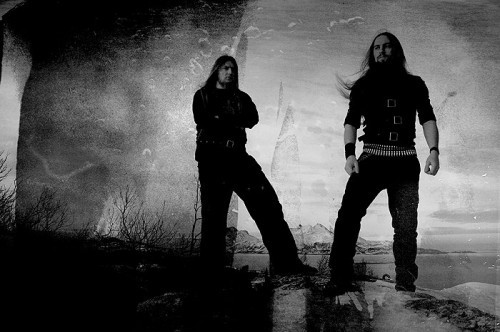
(EDITOR’S NOTE: Our UK contributor Andy Synn returns with another edition of The Synn Report. This edition serves as part retrospective and part review of Iskald’s newest CD, The Sun I Carried Alone, which has just been released.)
Primarily described as a Black/Thrash hybrid, Iskald is the brainchild of Simon Larsen (Vocals, Guitars, Bass and Keyboards) and Aage André Krekling (drums and vocals) whose progressive, open take on furious yet melodic black metal is like a scalpel to death metal’s sledgehammer, vicious and precise but no less lethal in intent.
With lyrics in both English and Norwegian, the band maintains a keen grasp of its own cultural heritage, informed by a wider world view than can be attributed to many of their peers. Thematically, the lyrics cover a lot of bleak and epic ground, addressing the mystery of forbidden secrets and cataclysmic ruin, but also dip into darkly romantic waters similar to what one might expect of My Dying Bride and Katatonia.
The use of keys is subtle and interesting, neither overtly symphonic and overwhelming or poorly produced and underwhelming (as can so often be the case). The drums provide more than just standard blast-heavy backing beats, performing quick and capable fills and tempo changes as part of an overall technically impressive display, while the bass remains a key component in the band’s sound. The duo’s real strength however is their ability to effortlessly reel off an endless supply of quality riffs, accented by intricate drum work and progressively inclined song-structures. (more after the jump, including songs from the band’s discography . . .)
The vocals maintain a clear, rasping growl reminiscent of a more natural version of Dimmu Borgir’s Shagrath or a more powerful variant on the delivery favoured by Abbath of the mighty Immortal. On each album the clear and powerful vocals use a mix of high, low and even whispered and chanted vocal styles to weave abstract tales of sorrow and rage. Even at their most direct and aggressive, the band never loses sight of the importance of using both the vocals and instruments in tandem to conjure a lasting sense of mood and to craft each song with its own individual character.
Shades Of Misery – 2006
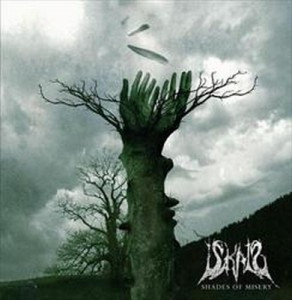 Intro track “Hymn Of Desolation” calls to mind mid-period Katatonia, foreshadowing the bitter melancholy which permeates the record, before first track proper “The Shadowland” is propelled into view by high velocity, hard-hitting drums leading to a full-on assault of molten black metal riffs. The band quickly establishes a strong sense of groove, however, to offset the blizzards of notes and drum hits which assault the listener.
Intro track “Hymn Of Desolation” calls to mind mid-period Katatonia, foreshadowing the bitter melancholy which permeates the record, before first track proper “The Shadowland” is propelled into view by high velocity, hard-hitting drums leading to a full-on assault of molten black metal riffs. The band quickly establishes a strong sense of groove, however, to offset the blizzards of notes and drum hits which assault the listener.
By contrast, on “Eden” Iskald push the melodic angle a little further, without compromising the sorrowful anger that the track embodies. The riffs remain strong and aggressive and act as a perfect foundation for greater melodic exploration. The bass is of particular importance in “Eden”, taking a leading role at specific points, a theme which continues throughout the rest of the album.
In contrast to the icy melodies favoured on “Eden”, “Warriors Of The Northern Twilight” places greater emphasis on the thrash roots at the heart of the style, mixing the classical thrust of prime Metallica with the dark and brooding sound of true Norwegian black metal, even managing to incorporate some technically challenging riffing and stop-start drum dynamics into the mix. The initial fury of black metal blasting, ably supported by a reverberating bass line, is quickly overtaken by a series of catchy, aggressive thrash riffs and minimalist, technical lead breaks.
“When Hell Freezes Over” initially hides its progressive tendencies behind a wall of distilled fury, brutal death metal vocalisations utilised sparingly to really hammer home the cold, dehumanising rage of the song. The melodies glisten like frost on frozen soil, and the interplay of lead and rhythm guitar parts give the song a massive, blackened-death metal feel akin to their peers in Necrophobic. The dark, grinding riffs are suddenly broken up by the introduction of a piece of calm, reflective piano work right in the middle of the song, complete with morose, whispered vocals. This moment of quiet introspection leaves one unprepared for the furious assault the band unleashes at the 4:45 mark, diving back into cascades of crashing riffing and thundering drums before the song fades back into the ether.
The centre-piece of the album is the “Blodsband” trilogy, three thematically intertwined songs entitled “Lokes Dans”, “Då Gjallarhorn Song” and “Pesten”.
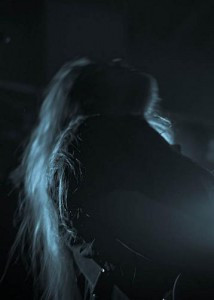 “Lokes Dans” is a thrashing piece of frenzied riffs and cold, black metal atmospherics recalling a more epic take on the punk-fueled blackened thrash of Skeletonwitch. Through sequences of explosive riffs the song adds a more refined sense of menace to its post-Dissection stylings, ably employing some death metal undertones via the occasional use of deeper gutturals. Fading out into the sounds of clashing steel, the track ends with a cold and crisp lead part tying the whole package together.
“Lokes Dans” is a thrashing piece of frenzied riffs and cold, black metal atmospherics recalling a more epic take on the punk-fueled blackened thrash of Skeletonwitch. Through sequences of explosive riffs the song adds a more refined sense of menace to its post-Dissection stylings, ably employing some death metal undertones via the occasional use of deeper gutturals. Fading out into the sounds of clashing steel, the track ends with a cold and crisp lead part tying the whole package together.
Primarily more mid-paced and spacious than “Lokes Dans”, the ringing melodies of “Då Gjallarhorn Song” are grounded by a deep, throbbing bass tone which hums and snarls around the main riffs like a caged beast. This song progresses from a spiky, thrashy opening section towards more grandiose, stately rhythms near the conclusion of the song, a prog-inflected solo weaving its own tale of woe over the majestic guitar lines beneath it.
The band’s burgeoning flair for epic, progressive song constructs is revealed on “Pesten”, the longest song on the album. Throughout its 9:17 length the song runs the gamut of moods and styles, huge uplifting melodies giving way to frantic thrash beats and depressive, harmonised guitar runs. The folk-inflected bridge strips back the metallic fury, bringing to mind the epic, sorrowful cast of Moonsorrow, and serves as an extended breather in amongst the warring thrash and black metal forces. Elements reminiscent of Katatonia once again rear their head at the tail end of the song, the lead guitar weeping a mournful refrain over a series of slow, layered guitar riffs shifting the tempo and mood towards a more sombre conclusion.
The real joys of this album are the sheer number of massive RIFFS that the pair are able to conjure up, combined with the sense of barely touched potential that promises greater things for the future. The clever and careful integration of a myriad of different styles into the black metal mould serves to expand its boundaries and allows the band huge scope for future growth and progression.
Recommended Song – Lokes Dans
Revelations Of Reckoning Day – 2008
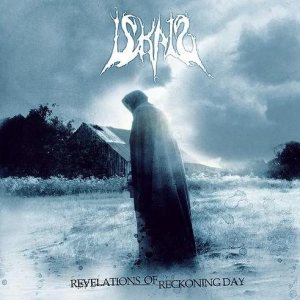 The noticeably thicker production is one thing that the listener immediately notices on pressing play on this album. The guitars have a lot more crunch to them, a thicker, deeper low end balancing out the ever-present post-Dissection melodies, with clean-picked and reverberating notes vying with ringing chords, soaring lead parts and precise, technically adept riffage.
The noticeably thicker production is one thing that the listener immediately notices on pressing play on this album. The guitars have a lot more crunch to them, a thicker, deeper low end balancing out the ever-present post-Dissection melodies, with clean-picked and reverberating notes vying with ringing chords, soaring lead parts and precise, technically adept riffage.
With no subtle introductory track this time around, the album begins with “Ruin Of Mankind”, a direct and aggressive number whose majestic tremolo-led melodies are tempered by a cleverly employed stop-start dynamic and a preponderance of crunchy, down-picked riffs. The lyrics weave an apocalyptic tale over an array of catchy instrumentation; the riffs are memorable, the bass work extremely complimentary and the drums nimble and well played. Even the lack of any sort of solo does not necessarily work to the song’s detriment, ringing melodic notes providing a counterpoint to the wholesale aggression on offer.
Following this with “A Breath Of Apocalyspe”, the themes of unavoidable Armageddon continue as, although overall slower than its predecessor, the song still has moments of blistering speed and even a moody, bass-led interlude for quiet introspection. I also can’t stress how well the band’s use of staccato, crisp riffs acts as a pleasant counter-point to the more traditional black metal elements employed, drawing parallels with the recent work of Old Man’s Child.
“Warriors Of The Northern Twilight, Pt 2” successfully expands upon the scope of the original; not as extreme in terms of speed, it carries with it a stronger sense of identity and a steamrollering groove which makes it an overall heavier proposition. The main riff refrain is also an uninhibited joy, employing grand black metal melody over thunderous drums. Although the longest song on the disc, incorporating a series of progressions and changes (along with another moody, dark mid-section) overall the song seems to flow more naturally than the original and serves well as a microcosm of the album as a whole.
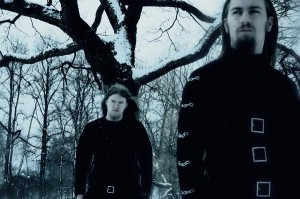 Both “The Orphanage” and “Det Stilner Til Storm” break away from the more traditional black metal mould. The former’s insistent mid-paced riffs blur the boundaries between melodic black and death metal, with frenzied blasting culminating in a despairing twin-lead melody. The latter employs dexterous finger-work and progressively inclined structuring, focussing on melodic tremolo lines and technical complexity along with a short solo that supplies a progressive, almost Pink Floyd feel to the track.
Both “The Orphanage” and “Det Stilner Til Storm” break away from the more traditional black metal mould. The former’s insistent mid-paced riffs blur the boundaries between melodic black and death metal, with frenzied blasting culminating in a despairing twin-lead melody. The latter employs dexterous finger-work and progressively inclined structuring, focussing on melodic tremolo lines and technical complexity along with a short solo that supplies a progressive, almost Pink Floyd feel to the track.
“Journey To Hell” begins as the most traditional piece of black metal on offer, the relentlessly blasting tempo disguising subtle folk undertones. Clever drumming gives each section its own distinct feel and provides the necessary propulsive fury the guitars need to soar aloft on the backs of bleak yet uplifting melodies. Final track “Dommedag” continues the relentlessly depressing lyrical bent, but places increased focus on the progressive aspects of the band’s sound. Echoes of Opeth abound as the band juxtapose scathing, whiplash tremolo work with icily regal chord progressions, ably supported by weighty sections of punishing guitar and drums, leading into contemplative acoustic parts and ending in a mournful fading keyboard progression.
The band successfully expanded the sound of their debut even further on this release, without losing any of the icy fury they had already demonstrated. The two members here showed themselves to be not only extremely talented musicians but also skilled song-writers able to naturally expand the remit of their particular brand of black metal.
Recommended song – Warriors of the Northern Twilight, Pt. II
The Sun I Carried Alone – 2011
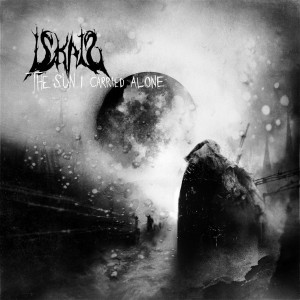 “Alucinor” (approx. “To wander in the mind/To dream”) opens the album with a short piece of subtle keyboard instrumentation that, unlike many of the more heavy-handed tracks of this type, really does serve to build one’s anticipation for the full force of the album to be unleashed. Thankfully one is not to be disappointed, as the furious riffs of “Under The Black Moon” each carry their own bleak promise, building naturally upon one another into a monolithic structure of blackened wrath and frostbitten melody. As always, the playing technique displayed is a cut above the average black metal band, the sheer variety of riffs on offer often morphing and mutating into one another in unexpected yet compelling ways.
“Alucinor” (approx. “To wander in the mind/To dream”) opens the album with a short piece of subtle keyboard instrumentation that, unlike many of the more heavy-handed tracks of this type, really does serve to build one’s anticipation for the full force of the album to be unleashed. Thankfully one is not to be disappointed, as the furious riffs of “Under The Black Moon” each carry their own bleak promise, building naturally upon one another into a monolithic structure of blackened wrath and frostbitten melody. As always, the playing technique displayed is a cut above the average black metal band, the sheer variety of riffs on offer often morphing and mutating into one another in unexpected yet compelling ways.
Segueing seamlessly into “Natt Utover Havet”, the band barely slows its pace, the martial drumming and flowing bass lines suddenly exploding into life via a sequence of choppy guitar riffs and ferocious drums. The groovy verse riffs and memorable lead refrains swiftly establish the song as more overtly melodic than its predecessor but continue to demonstrate an overarching sense of organic progression as parts flow into and out of each other in unbroken succession.
The introduction to “Forged By Wolves” is captivating in its clever delivery; a powerful chugging riff transforming into a driving chord progression, morphing back into an even chunkier variation on the initial riff, before a short acoustic break allows the band to naturally switch into a series of blackened tremolo leads. The interplay of melodic counterpoints is a key feature behind this song’s success, harmonious guitar lines presented to each ear separately, enveloping the listener in sound and really driving home the contrast when the band breaks into the chunkier, crushing riffs that they have become known for.
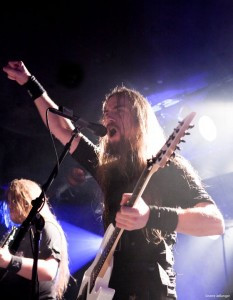 At 7:26, the longer run-time of “I Lys Av Mørket” allows the band to further explore their progressive tendencies. Traditional black metal elements are supplanted by staccato riffing, melodically textured chord patterns and off-kilter technical guitar runs, all inter-mixed and intertwined to lead the song in unexpected directions. Throughout it all, the band maintains a sharp sense of continuity and unrelenting groove, much of the credit for which rests on the tasteful drum work, which can vary from exceedingly flashy to reassuringly simplistic to suit the song, rather than overwhelming it with unending aural assaults of blasting insanity. The extended acoustic section at 5:09 is beautifully written and serves perfectly to introduce the melodic denouement of a song which puts progression before aggression.
At 7:26, the longer run-time of “I Lys Av Mørket” allows the band to further explore their progressive tendencies. Traditional black metal elements are supplanted by staccato riffing, melodically textured chord patterns and off-kilter technical guitar runs, all inter-mixed and intertwined to lead the song in unexpected directions. Throughout it all, the band maintains a sharp sense of continuity and unrelenting groove, much of the credit for which rests on the tasteful drum work, which can vary from exceedingly flashy to reassuringly simplistic to suit the song, rather than overwhelming it with unending aural assaults of blasting insanity. The extended acoustic section at 5:09 is beautifully written and serves perfectly to introduce the melodic denouement of a song which puts progression before aggression.
With title track “The Sun I Carried Alone” the band reintroduces some of that missing aggression, with a more direct, thrashing approach. The melodic, Viking-metal refrain is the song’s main selling point. As haunting as it is powerful, the band employ its captivating melody in a number of clever iterations throughout the song. The vocals have a new-found power to them, multiple layers building on the demonic aspect of their delivery, particularly during the mid-song interlude where the band drastically strips back the instruments to a bare minimum, allowing the vocals to dominate for a time.
Nowhere else is the band’s reliance on bass more obvious than in “Rigor Mortis”. Opening with a fuzzy, distorted bass line and some pared-down drums, the band slowly introduces successive layers of slow guitars, the drums steadily increasing their pace, as the song progresses in a largely linear fashion from beginning to end. Haunting choral vocals back up the main growls while the introduction of an almost atonal lead part increases the sense of dissociation.
The opening of “These Dreams Divine” builds upon the atonal, anti-melodic sentiments of “Rigor Mortis”, juxtaposing some odd, ringing chords against more traditionally icy melodies and a more up-tempo delivery. The drumming is performed with energy and flair, the blasts precise but not overwhelming, and the interplay of complex hand- and foot-work captivating. The song has shades of Immortal to it and is also one of the few songs to be graced with a particularly prominent solo, fading in and out during the hypnotic outro.
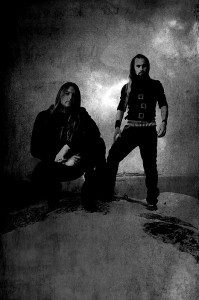 Final track “Burning Bridges” is a true monster of a song. Clocking in at a hefty 11:02 long, not a second is wasted on over-indulgence or aimless repetition, the song’s tight structuring belying its lengthy time-span. Easily the most brooding composition on the record, the palpable sense of loss and desperation Iskald invoke reaches its zenith on this song. The band keeps the listener guessing with numerous tempo changes and the employment of a series of different riff styles, scorching guitar work and caustic melodies building towards a slow-burning sense of isolation and human desolation. In the middle of the song the band combines bare, minimalist guitar and melancholy bass melodies to weave an atmosphere of quiet desperation around the listener, off-set with raw, cracked vocals and barely restrained drumming ferocity.
Final track “Burning Bridges” is a true monster of a song. Clocking in at a hefty 11:02 long, not a second is wasted on over-indulgence or aimless repetition, the song’s tight structuring belying its lengthy time-span. Easily the most brooding composition on the record, the palpable sense of loss and desperation Iskald invoke reaches its zenith on this song. The band keeps the listener guessing with numerous tempo changes and the employment of a series of different riff styles, scorching guitar work and caustic melodies building towards a slow-burning sense of isolation and human desolation. In the middle of the song the band combines bare, minimalist guitar and melancholy bass melodies to weave an atmosphere of quiet desperation around the listener, off-set with raw, cracked vocals and barely restrained drumming ferocity.
The potential was clearly there on both of their first two albums, but with “The Sun I Carried Alone” I truly feel that Iskald achieved a watershed moment. The progressive intent found on their first two records is now clearly incorporated into all aspects of their sound without limiting the duo’s ability to write heavy, fiery riffs. Much of the album will be of particular appeal to those who felt that the most recent Watain had lost its edge by being too polished as, although the styles are not dissimilar, Isklad have successfully incorporated precise, clinical production values into their style without losing that sense of danger or unpredictability that defines black metal as an art form.
Recommended song – The Sun I Carried Alone
Recommended For Fans Of: Old Man’s Child, Immortal, Dissection

AH, this is right up my alley. A Perfect sort of band to accompany my Istapp, Rimfrost and Dark Fortress obsessions.
Dark Fortress are pretty much my favourite black metal band. A comparison is valid too, I’m sorry I missed out on it!
I am having one of those I-can’t-believe-I-overlooked-this-band moments. Iskald was a familiar name, but until Andy’s post I’d never actually heard an Iskald song. Now I’ve heard three, and man do they sail right into my harbor. The music does remind me of Dissection (a band I love). Great combination of the jagged and the melodic; great variety in the tempos, rhythms, and the riffing/picking styles; great vocals — basically, everything is great.
Good stuff as usual Andy.
I saw a reference on Old Man’s Child. I haven’t seen many bloggers mention them. I was wondering what your take on them are?
Love ’em. Really do.
Their last one for me was the best, although I enjoy all their albums to different degrees.
Galder’s greater focus on more complex riffing really shines and I particularly enjoy the different styles of all the different drummers he’s worked with over the ages.
I’ll hopefully be doing a column on their disco soon, I have all the albums apart from “The Pagan Prosperity” and so will be covering them once I have a hold of it.
I really liked their last album too. I tend to listen to more melodic/symphonic black metal. I would be interested to here your take on the bands that use heavy orchestration as opposed to those bands that rely on the tried and true black metal formula, which I have a really hard time getting into.